
During August 2022, a team from MIT D-Lab visited Nepal to conduct field research on a water heater designed during the school year as well as continuing with previous cook stove research. The team consisted of D-Lab Research Scientist Dan Sweeney, project mentor Sucheta Baliga, and five MIT students. Eva Nates is a second year graduate student in Mechanical Engineering; Ritik Patnaik is a graduate student in Electrical Engineering & Computer Science; Thomas Brooks is a senior studying mechanical engineering; Grace Harrington is a senior studying Civil and Environmental Engineering as well as minoring in energy studies; Iselle Barrios is a junior studying chemical engineering with a concentration in energy. All five of us students had taken the D-Lab class Introduction to Energy in Global Development in the spring. In Nepal, we also worked with Sarvesh Pandey and Abin Thapa, two recent alumni of Kathmandu University (KU) mechanical engineering. We also benefited from the guidance of two KU professors, Dr. Binaya KC and Professor Bim Shrestha.
Project overview
D-Lab has worked on improving home heating in the Himalayan Region for several years. Previous projects have focused on improving insulation and building more efficient stoves. For our group’s project in the Introduction Energy in Global Development class during the spring of 2023, we decided to take a different approach. We developed a tank that would latch onto chimneys and would store the excess heat passing through the chimney in the form of domestic hot water. The goal of this product was to improve access to a consistent source of hot water while not increasing the time spent using the stove or wood needed to operate the stove. The name of this design – chulo gaagri – is the combination of two Nepali words. Chulo means stove and a gaagri is a copper water vessel commonly found in the region. We hoped that choosing a simple name that both encapsulated our design and was familiar in the local dialect would foster improved user interactions.
Salambu home visits
After flying across the world into Kathmandu and meeting our teammates from KU in Dhulikhel, our first stop on our fieldwork trip was the locality of Salambu. Amidst the picturesque scenery of rolling valleys and terrace fields, our team revisited three homes where D-Lab had installed Matribhumi Urja[a] two-pot clay (mato) cookstoves on a field visit last year. The first home we visited was that of Tulakumari, a vibrant woman who welcomed us with open arms and a plate of cucumbers with piping hot green chili chutney.
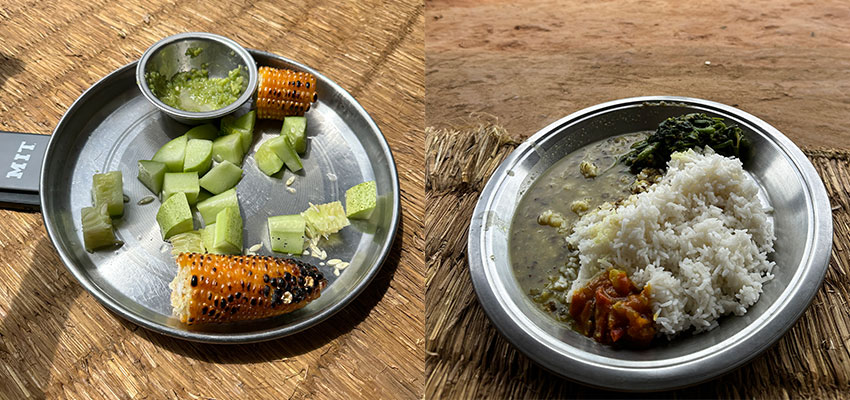
As part of our user research, we conducted a follow-up interview with Tulakumari to gain insight into how the mato cookstove has improved her family’s lifestyle. Overall, she shared very positive feedback about the cookstove, and how she uses it every day to cook meals for her family. Furthermore, the extended family living next door to her had recently built a similar clay cookstove in their home. After the interview, Tulakumari and her daughter-in-law fed us a scrumptious lunch of dal bhat (lentils and rice) cooked in the clay cookstove.
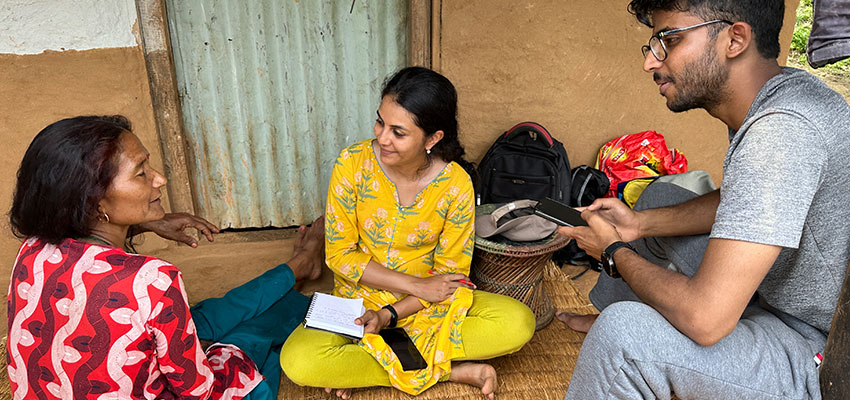
After visiting Tulakumari’s home, we visited the homes of Subhadra and Devmaya, interviewing them both. We learned that the cookstoves in these homes were not burning cleanly, causing overwhelming amounts of smoke in the homes. Upon further investigation of the cookstoves, we noticed the chimneys had become clogged and, in one case, the stove burner grate was installed incorrectly. We taught each of the families how to perform maintenance of their stoves, i.e. what parts to check and how to clean the chimneys. At all three homes, we completed our visit with Water Boil Tests (WBTs) to assess the efficiency of the cookstoves after one year of installation, and our team is currently analyzing the data collected from the trip.
Working with Murli Dai and Dilli Dai
We worked with two incredible local craftsmen to develop our chulo gaagri prototype to both construct and test cookstoves. Both are amazing teachers, and they helped us accomplish far more than we expected to during our preparation for our team’s next stop, the high-elevation village of Kyanjin Gompa. First was Murli Dai, a metalworker in Banepa who specializes in traditional copper work. He has decades of experience making conventional gaagri with simple, low-cost tools, so he was the perfect mentor for our chulo gaagri prototype. Over the course of six days, he guided the construction and modification of four prototypes of various sizes and designs. He was incredibly gracious to open his private workshop to us and very patient in dealing with the language barrier and our novice metalworking skills. He consistently put far more effort than we expected into helping us manufacture difficult parts and fix our mistakes, and our prototypes ended up far more developed and effective because of him. It was emotional leaving his shop for the last time.
The second craftsman we worked with was Dilli Dai, a master stove maker for Matribhumi Urja. He came with us to Salambu to perform WBTs on Matribhumi Urja cookstoves in the village, check on a stove he built last year for Tulakumari, and guide us in constructing one for her neighbor. Like Murli Dai, he was truly a master of his craft. It was incredible to see how quickly he could turn literal mud into an efficient clean cookstove. He also brought plenty of fun to the trip. His not-so-secret dream of going viral on TikTok led to most of the team spontaneously starring in hilarious and slightly embarrassing videos.
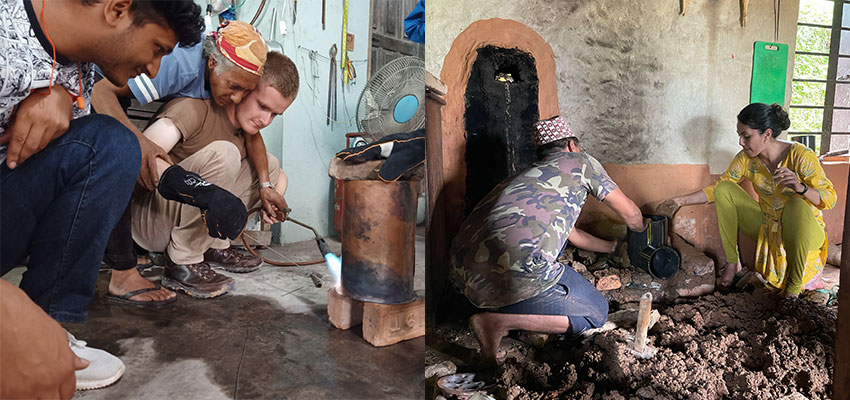
Chulo Gaagri Feedback in Kyanjin Gompa
One of our main activities in Kyanjin Gompa was getting user feedback on our chulo gaagri. Initially, we had designed these chulo gagari for elderly members of the community who had been relocated to Kyanjin Gompa after the 2015 Gorkha Earthquake. When we arrived, however, we found that many of these elderly people with whom D-Lab had partnered before, were no longer living in the housing block. While this did not go as planned, it did allow for us to engage in feedback sessions with a wider range of people within the community than we would have otherwise.
One benefit that arose from this is that we found a potential new user group for the chulo gaagri as many of the women in the village were very receptive to the concept. After seeing the chulo gaagri and hearing the name, they pretty quickly recognized how it was intended to be used and saw value in having it in their kitchen. We were able to complete user interviews with several women who also provided feedback on areas of growth. We left several of our gagari installed on the chimneys in Kyangin Gompa and future D-Lab teams will be able to check in and gain a better sense of how the chulo gaagri has been used after a longer period of time.
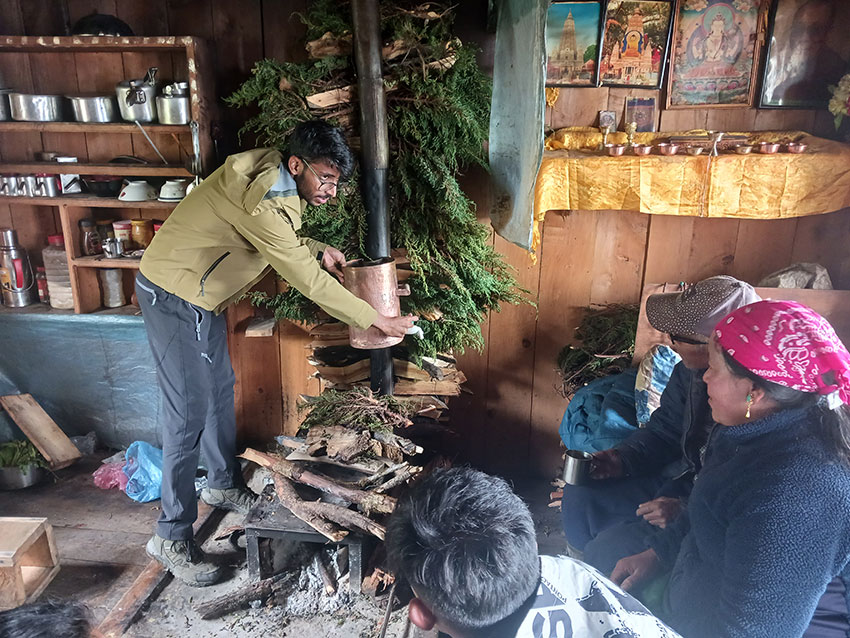
Stove Modifications Kyanjin Gompa
Another major facet to our work in Kyanjin Gompa was making modifications to existing stoves within the community. One of the major projects that we worked on was on a stove of an elderly man, Dorje, who lived in the housing block that D-lab had partnered with previously. Dorje’s stove was inefficient and would sometimes cause a lot of smoke to be released into his home. To help improve these aspects, we decided to build a metal insert for the stove that both reduced the volume (to promote a hotter and cleaner burning fire) and directed the smoke into the chimney better.
One aspect of the design process of this insert that was pretty cool was how Dorje had been using some scrap metal to try and decrease the volume prior to arrival. Because he had been trying to make similar adjustments, we found it was easy to engage with him, despite challenging communication barriers, while creating a more permanent solution with a mutual understanding of how small adjustments would be very beneficial in the long run. One aspect that made this user feedback cycle hard was the number of translations we had to go through. English would be translated to Nepali and then to a Tibetan dialect which was the only language spoken by many of the elderly community members in the village. While this long line of translations was frustrating at times, it was also very beneficial because it made us more attuned to nonverbal communication signals like the different ways they would nod their head. One day we brought along a cardboard sketch model of our insert and while this was mainly a check for dimensions on our end, we also found that having a physical representation significantly helped us communicate and get user feedback.

A favorite moment from the trip was after the insert had been installed and the first fire was roaring. Dorje was meticulously checking out the new stove when several of his neighbors came over to see what all of the visitors were doing at his house. Upon their own investigation, many of them became excited and wanted to have a similar insert for their own stoves. During this time, Dorje had started off pretty mellow, but as his friends started to ask questions and show interest in the project, he became more animated and excited about interacting with the insert. This demonstrated to us that even though we had only made one product, the impact had more potential because of the level of engagement it generated and because there was the knowledge within the community to continue to apply similar design techniques to their own stoves.
Adventure and cultural connections
We were lucky to have the chance to explore cultural and religious sites in and around Kathmandu while we were there. We visited Bhaktapur, a small city near Kathmandu home to several palaces and temples that are hundreds of years old. We also visited Swayambhunath, a temple complex, centered around a huge golden stupa that was originally built about 1500 years ago.
Getting to Kyanjin Gompa was an adventure. After driving seven hours from Kathmandu to Syapbrubest, the gateway to Langtang National Park, we trekked for two and a half days to get to Kyanjin Gompa, staying in small guest houses along the way each night. The trek was physically exhausting at times, but it was more than worth it. The scenery was incredible. There were towering mountain peaks, wildflowers in every color of the rainbow, waterfalls large and small, and a glacier-fed raging river that was awe-inspiring in its speed and strength. We even saw a group of wild monkeys on the trek down - definitely a highlight! While in Kyanjin Gompa, we hiked Kyanjin Ri, a peak located near the village, which gave us stunning views of the surrounding mountains and glaciers.
On our last day there, we were invited to a local religious festival at Tserko Ri, which was about a three-hour hike away. We were able to participate as villagers replaced old prayer flags and hung new ones in an annual ceremony. After everyone had eaten lunch, we watched as people sang and danced in a circle around the new flags. It was really interesting to have a chance to observe and learn about local religious and cultural traditions.
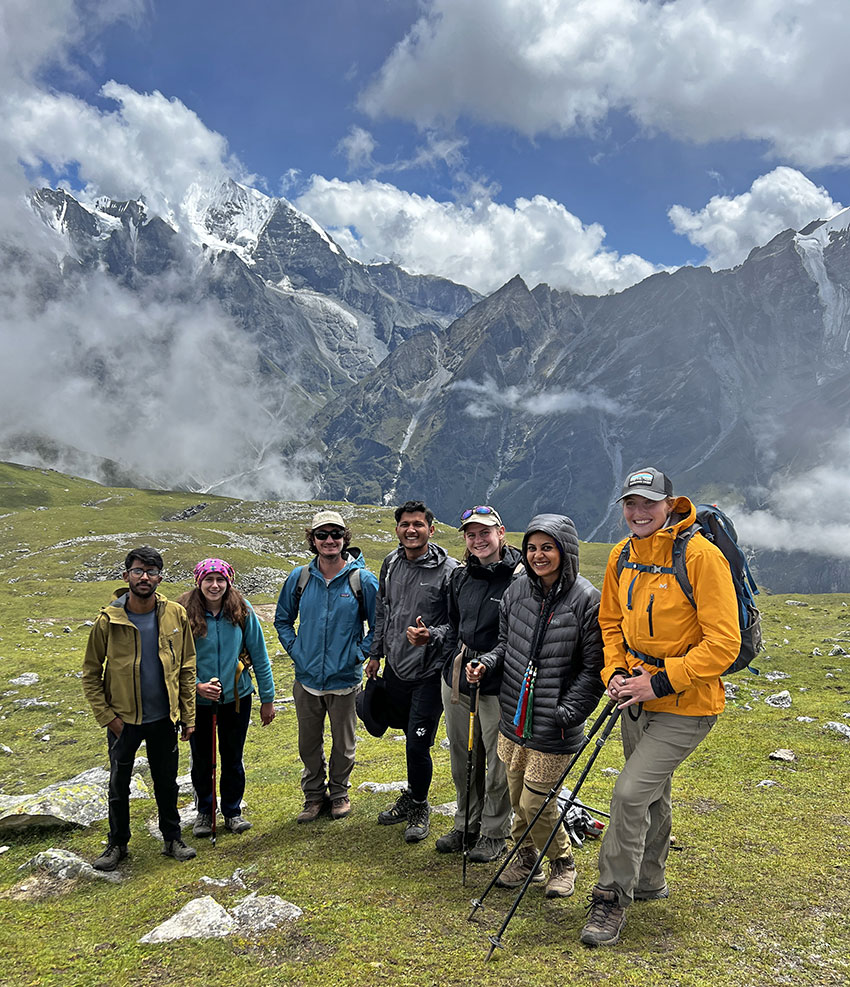
More information
MIT D-Lab class: Introduction to Energy in Global Development
Contact
Dan Sweeney, MIT D-Lab Lecturer and Research Scientist

